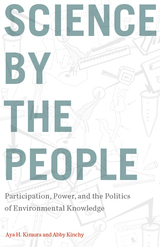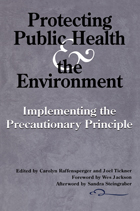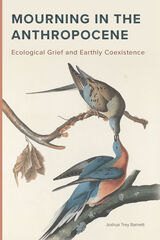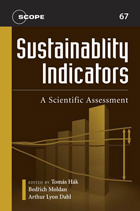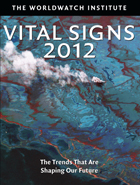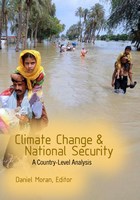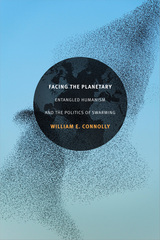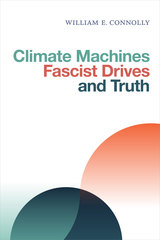ABOUT THIS BOOK"Sustainable development is the Holy Grail of governments and leaders but has remained elusive and undefined. Wellbeing of Nations provides the diagnostics to turn sustainability into reality. This is the ultimate travel guide to a sustainable future." --Jose Maria Figueres, former President of Costa Rica, World Economic Forum "At long last, a real metric for measuring sustainability and wellbeing. It provides a way to chart a better future. The cornerstone of any working library on environment, development, and quality of life. A volume without peer." --Thomas E. Lovejoy, Chief Biodiversity Advisor, The World Ban.The use of indicators to gauge human progress is common and well understood; Gross Domestic Product and the Index of Leading Economic Indicators are two well-known examples. Yet most of the widely cited indicators focus exclusively on economic activity, and even the most progressive of indicators fail to account for key issues of sustainability. The Wellbeing of Nations addresses that shortcoming by combining indicators of human well-being with those of environmental stability to generate a more comprehensive picture of the state of our world.The author combines 39 indicators of health, population, wealth, education, communication, freedom, peace, crime, and equity into a Human Wellbeing Index, and 39 indicators of land health, protected areas, water quality, water supply, global atmosphere, air quality, species diversity, energy use, and resource pressures into an Ecosystem Wellbeing Index. The two indexes are then combined into a Wellbeing/Stress Index that measures how much human wellbeing each country obtains for the amount of stress it places on the environment. Seventy color-coded geopolitical maps vividly portray the performance of each of the 180 nations for all indexes, and the main indicators that go into them. In addition, all data are given in 160 pages of tables, and the highly accessible methodology is described in appendices so that readers can undertake their own assessments.Produced in collaboration with the leading international organizations involved with sustainable development, The Wellbeing of Nations is a one-of-a-kind reference for development and environmental policy professionals, as well as for students and scholars in environmental studies, international studies, and international development.
TABLE OF CONTENTS
1. The quest for wellbeing and sustainability
How far to the good life? 1
Why new indices? 2
The Wellbeing Assessment difference 2
Guide to this book 4
2. Human wellbeing
Human Wellbeing Index 13
MEASURING HUMAN WELLBEING 13 * FEW NATIONS WELL, MANY UNWELL 14 �
THE EQUITY EFFECT 16 * IT'S THE ECONOMY, AND IT'S NOT 17 * HOW FAR
FROM HAVING NOTHING-OR HOW CLOSE TO HAVING IT ALL? 17
Health and population 20
HEALTH 21 * POPULATION 23
Wealth 25
HOUSEHOLD WEALTH 26 * NATIONAL WEALTH 31
Knowledge and culture 36
Community 41
FREEDOM AND GOVERNANCE 42 * PEACE AND ORDER 45
Equity 49
HOUSEHOLD EQUITY 50 * GENDER EQUITY 51
3. Ecosystem wellbeing
Ecosystem Wellbeing Index 59
MEASURING ECOSYSTEM WELLBEING 59 * MOST OF THE PLANET IS POOR OR
MEDIOCRE 61 * THE RESOURCE USE EFFECT 63 * BIODIVERSITY AND
ENVIRONMENTAL QUALITY 64 * THE SIZE OF THE FOOT-OR WHERE IT'S PUT? 65
Land 67
LAND DIVERSITY 68 * LAND QUALITY 72
Water 74
Air 80
GLOBAL ATMOSPHERE 81 * LOCAL AIR QUALITY 84
Species and genes 86
WILD DIVERSITY 87 * DOMESTICATED DIVERSITY 91
Resource use 94
ENERGY AND MATERIALS 95 * RESOURCE SECTORS 96
4. Combining human and ecosystem wellbeing
Distances to sustainability 107
WELLBEING INDEX 107 * WELLBEING/STRESS INDEX 109 * WELLBEING
PERFORMANCE GROUPS 111 * HUMAN WELLBEING AND ECOSYSTEM STRESS: SIGT
OF A WAY FORWARD 112
Regional reviews 115
NORTH AND CENTRAL AMERICA 116 * WEST INDIES 118 * SOUTH AMERIC
120 * NORTHERN AFRICA 122 * WEST AFRICA 124 * CENTRAL AND EAST
AFRICA 126 * SOUTHERN AFRICA 128 * NORTHERN EUROPE 130 �
SOUTHERN EUROPE 132 * EASTERN EUROPE 134 * WEST ASIA 136 * RL
AND CENTRAL AND EAST ASIA 138 * SOUTHERN ASIA 140 * PACIFIC 142
Aiming for human and ecosystem wellbeing 144
COMMITMENT TO HUMAN AND ECOSYSTEM WELLBEING 144 * REGULAR WELLBI
ASSESSMENTS 144 * INFORMATION AND COMMUNICATION ON HUMAN AND
ECOSYSTEM WELLBEING 145 * SUSTAINABLE WEALTH 146 * WELLBEING ARE}
(SLOW ZONES) 147 * WELLBEING ALLIANCES AND PARTNERSHIPS 147
Data Tables
Table 1. Human Wellbeing Index 150
Table 2. Health and population 154
Table 3. Wealth index; household wealth 158
Table 4. National wealth 162
Table 5. Knowledge 166
Table 6. Community index; freedom and governance; peace 170
Table 7. Crime 174
Table 8. Equity 177
Table 9. Ecosystem Wellbeing Index 181
Table 10. Land index; basic data; native forest change 185
Table 11. Natural, modified, cultivated, and built land 189
Table 12. Land protection 194
Table 13. Land quality 198
Table 14. Water index; river conversion; water withdrawal 202
Table 15. Inland water quality: score, oxygen balance, nutrients, and
acidification 206
Table 16. Inland water quality: suspended solids, microbial pollution, and
arsenic and heavy metals 218
Table 17. Air index; global atmosphere 225
Table 18. Local air quality 229
Table 19. Species and genes index; wild species rank; wild plant
species 235
Table 20. Wild animal species; domesticated diversity 239
Table 21. Domesticated diversity (continued) 243
Table 22. Resource use index; energy; timber 247
Table 23. Agriculture; fish and seafood self-reliance 251
Table 24. Fisheries 255
Table 25. Wellbeing Index and Wellbeing/Stress Index 259
Table 26. Wellbeing performance groups 263
Table 27. Countries ranked by Wellbeing Index 267
Appendix A. Monetary and physical accounts 269
Counting money: the System of National Accounts 269
Wrong number: Gross Domestic Product 270
Better bookkeeping: "greening" the national accounts 271
Heavy lifting: physical accounts 274
Appendix B. Wellbeing Assessment 277
Scope and origins of Wellbeing Assessment 277
Framework: equal treatment of people and ecosystem 277
Six-stage cycle 279
STAGE 1. DEFINE THE SYSTEM AND GOALS 279 * STAGE 2. IDENTIFY ELEMENTS
AND OBJECTIVES 280 * STAGE 3. CHOOSE INDICATORS AND PERFORMANCE
CRITERIA 280 * STAGE 4. MEASURE AND MAP INDICATORS 284 * STAGE 5.
COMBINE INDICATORS AND MAP INDICES 287 * STAGE 6. REVIEW RESULTS AND
PROPOSE POLICIES 289
Supplement 1. Bellagio principles for assessing sustainable
development 289
Supplement 2. Background of the dimensions 290
Supplement 3. Assessment frameworks 291
Supplement 4. Common units for combining indicators 292
Supplement 5. Performance scales 292
Appendix C. Performance criteria chosen for The Wellbeing of
Nations 297
Appendix D. Summary of combining procedures used in The
Wellbeing of Nations 307
Appendix E. Map Maker Pro 313
Appendix E Initial classification of interior, coastal,
and ocean basins 315
References 325
Index 335


